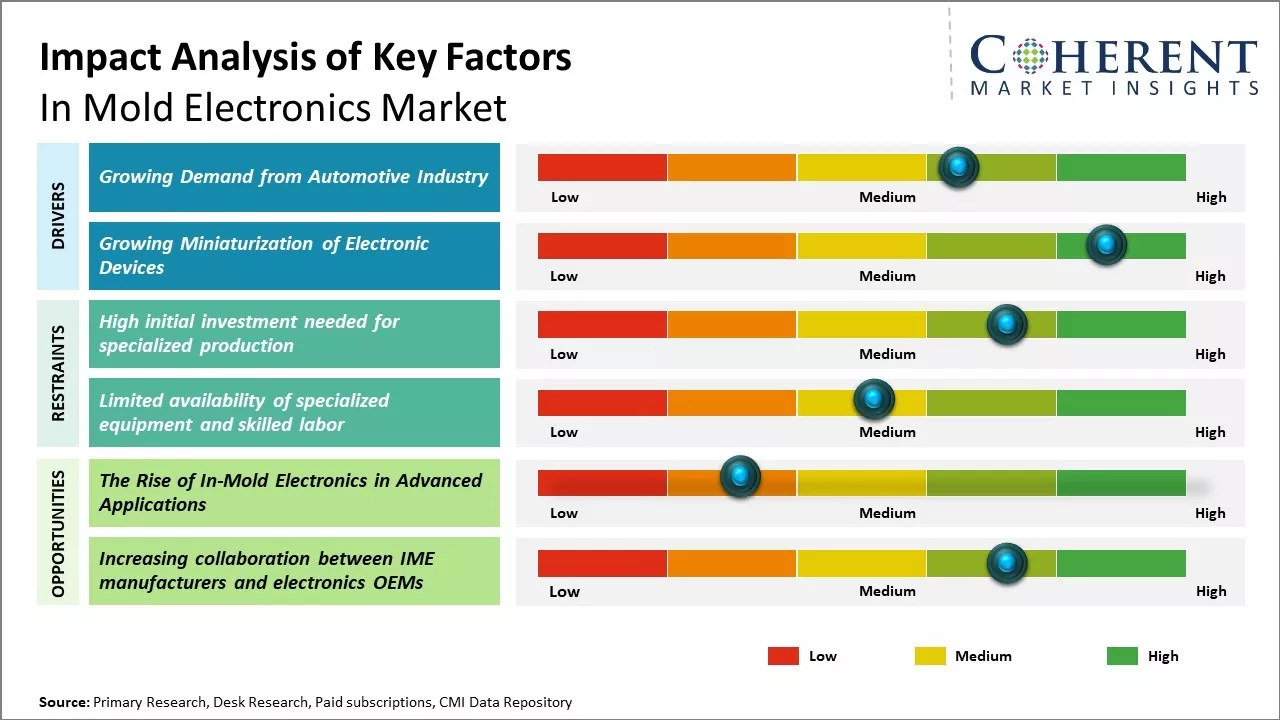The In Mold Electronics Market is estimated to be valued at US$ 291.9 Mn in 2025 and is expected to reach US$ 1,608.4 Mn by 2032, exhibiting a compound annual growth rate (CAGR) of 27.6% from 2025 to 2032.

To learn more about this report, Request sample copy
The market is expected to witness significant growth during the forecast period. The rising demand for lightweight and cost-effective products across various end-use industries along with the increasing adoption of IoT and connected devices is expected to drive the demand for in mold electronics. Adoption of in mold electronics help manufacturers reduce additional production cost, assembly time and minimize waste during the production of electronic devices. Ongoing technological advancements in the field of printed electronics, such as the development of new conductive inks, is further expected to provide growth opportunities for in mold electronics manufacturers over the coming years.
Growing Demand from Automotive Industry
The automotive industry has been one of the major adopters of in mold electronics technology. In mold electronics allows integrating electronic components such as sensors, antennae and illuminated logos directly into plastic vehicle parts during the injection molding process. This method has advantages compared to traditional methods. It removes the need for extra assembly steps after molding, simplifying the manufacturing process. It also allows for better integration of electronics with vehicle structures, enabling new and creative uses.
Several new vehicles unveiled in recent years featured innovative usage of in mold electronics. Advanced driver assistance systems like lane departure warning, adaptive cruise control and emergency braking rely on various sensors integrated into bumpers and other body parts. In mold technology allows seamlessly embedding these sensors during production. LED lights and illuminated vehicle badges integrated into exterior plastic trims using this technology are also becoming common. With autonomous driving gaining momentum, in mold electronics can facilitate tight integration of various sensors required for proper functioning of self-driving systems.
Regulations mandating safety features like backup cameras are also driving automotive manufacturers to explore in mold electronics. Integrating camera modules directly into tailgates or license plate housing addresses reliability issues associated with detachable camera units. As autonomous, connected and electric vehicles gain wider acceptance, the level of electronics and amount of sensors in vehicles is expected to multiply tremendously. This puts the spotlight on in mold electronics that enables simplified assembly of vehicles with high electronic content. The growing electrification of automobiles is another driver, as in mold technology supports novel approaches to integrating electronic controls and displays. With its ability to enable innovation and help comply with regulations, in mold electronics is sure to play a pivotal role in automotive industry's transformation in coming years.
Joining thousands of companies around the world committed to making the Excellent Business Solutions.
View All Our Clients